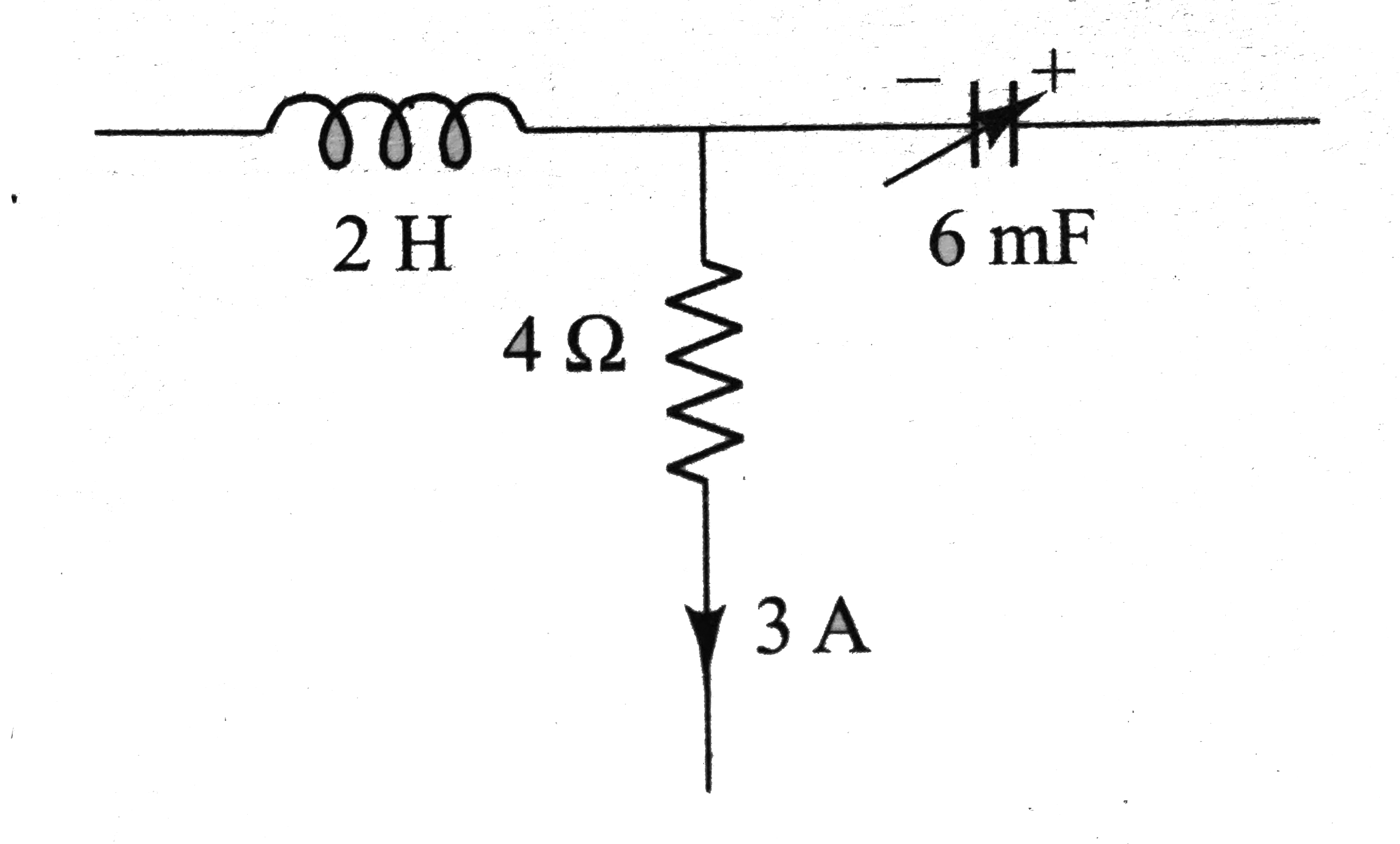A motor operating on 120V draws a current of 2A . If the heat is developed in the motor at the rate of 9cals−1, what is the efficiency?
To find the efficiency of the motor, we will follow these steps:
Step 1: Calculate Input Power
The input power (P_input) of the motor can be calculated using the formula:
Pinput=V×I
Where:
- V=120V (voltage)
- I=2A (current)
Substituting the values:
Pinput=120V×2A=240W
Step 2: Convert Heat Developed to Watts
The heat developed in the motor is given as 9cal/s. We need to convert this to watts (joules per second) using the conversion factor 1cal=4.2J:
Pheat=9cal/s×4.2J/cal=37.8W
Step 3: Calculate Output Power
The output power (P_output) of the motor can be calculated by subtracting the power dissipated as heat from the input power:
Poutput=Pinput−Pheat
Substituting the values:
Poutput=240W−37.8W=202.2W
Step 4: Calculate Efficiency
The efficiency (η) of the motor can be calculated using the formula:
η=(PoutputPinput)×100
Substituting the values:
η=(202.2W240W)×100=84.25%
Final Answer
The efficiency of the motor is 84.25%.
---
The input power (P_input) of the motor can be calculated using the formula:
Pinput=V×I
Where:
- V=120V (voltage)
- I=2A (current)
Pinput=120V×2A=240W
The heat developed in the motor is given as 9cal/s. We need to convert this to watts (joules per second) using the conversion factor 1cal=4.2J:
Pheat=9cal/s×4.2J/cal=37.8W
The output power (P_output) of the motor can be calculated by subtracting the power dissipated as heat from the input power:
Poutput=Pinput−Pheat
Substituting the values:
Poutput=240W−37.8W=202.2W
The efficiency (η) of the motor can be calculated using the formula:
η=(PoutputPinput)×100
Substituting the values:
η=(202.2W240W)×100=84.25%
The efficiency of the motor is 84.25%.
Topper's Solved these Questions
- BOOK - CENGAGE PHYSICS ENGLISHCHAPTER - HEATING EFFECT OF CURRENTEXERCISE - Subjective8videos
HEATING EFFECT OF CURRENT
- BOOK - CENGAGE PHYSICS ENGLISHCHAPTER - HEATING EFFECT OF CURRENTEXERCISE - Single Correct60videos
HEATING EFFECT OF CURRENT
- BOOK - CENGAGE PHYSICS ENGLISHCHAPTER - HEATING EFFECT OF CURRENTEXERCISE - Solved Examples13videos
HEATING EFFECT OF CURRENT
- BOOK - CENGAGE PHYSICS ENGLISHCHAPTER - GEOMETRICAL OPTICSEXERCISE - Integer Type4videos
GEOMETRICAL OPTICS
- BOOK - CENGAGE PHYSICS ENGLISHCHAPTER - INDUCTANCEEXERCISE - Concept Based8videos
INDUCTANCE
Similar Questions
Knowledge Check
- Question 1 - Select One
A gear ratio r:s is the ratio of the number of teeth of two connected gears. The ratio of the number of revolutions per minute (rpm) of two gear wheels is s:r. In the diagram below, Gear A is turned by a motor. The turning of Gear A causes Gears B and C to turn as well.

If Gear A is rotated by the motor at a rate of 100 rpm, what is the number of revolutions per minute for Gear C?A50B110C200D1,000
An installation consists of an electric motor which drives a water pump to lift 75 L of water per second to a height of 5m, where water is disbursed at neglible speed. If the motor consumes a power of 5 kW, then what is the efficiency (%) of the installation?
[g=10ms−2]View SolutionAn electric motor is designed to work at 100Vand draws a current of 6A . The output power supplied by the motor is 150W, find the power remaining in the motor and its percentage efficiency?
View SolutionA motor car travelling at 30m/s on a circular road of radius 500m. It is increasing its speed at the rate of 2ms−2. What its accleration at that instant ?
View SolutionAluminium container of mass of 10 g contains 200 g of ice at−20∘C. Heat is added to the system at the rate of 100 calories per second. What is the temperature of the system after four minutes? Draw a rough sketch showing the variation of the temperature of the system as a function of time . Given:
Specific heat of ice = 0.5calg−1(.∘C)−1
Specific heat of aluminium = 0.2calg−1(.∘C)−1
Latent heat of fusion of ice = 80calg−1View SolutionA step up transformer operates on a 230V line and a load current of 2 ampere. The ratio of the primary and secondary windings is 1:25. What is the current in the primary?
View SolutionFigure shows a part of a bigger circuit. The capacity of the capacitor is 6mF and is desaesing at the constate rate 0.5mFs−1. The potential difference across the capacitor at the shows moment is changing as follows:
dVdt=2Vs−1, d2Vdt2=12VS−2
The current in the 4Ω resistor is decreasing at the rate of 1mAs−1. What is the potential difference (in mV) across the inductor at this moment?
 View Solution
View SolutionThe power rating of an electric motor that draws a current of 3.75A, when operated at 200V, is nearly
View Solution

